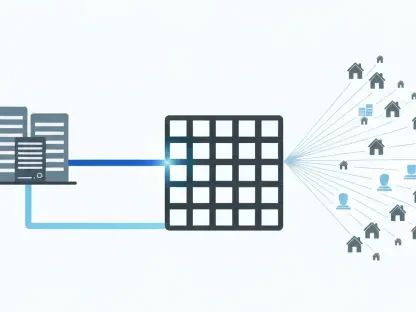Data visualization tools have become indispensable in the realm of modern data analytics. As the volume of data generated continues to grow exponentially, the need for effective tools to interpret and present this data has never been more critical. These tools are not just about creating pretty charts and graphs; they are about transforming raw data into meaningful insights that drive decision-making and strategic planning. The market for data visualization tools is expanding rapidly. According to a report by Fortune Business Insights, the market is expected to grow from $8.85 billion in 2019 to $19.20 billion by 2027. This growth is driven by several factors, including the proliferation of smartphones, increased internet usage, advancements in machine learning, the rise of cloud computing, and the Internet of Things (IoT). These trends are creating vast amounts of data that need to be analyzed and understood quickly and efficiently.
The Importance of Data Visualization
Data visualization plays a crucial role in making sense of large datasets. It transforms raw data into visual formats such as charts, maps, and graphs, making it easier for stakeholders to extract actionable insights. This visual representation helps in identifying patterns, trends, and outliers that might not be apparent in raw data. Effective data visualization can significantly enhance decision-making processes. By presenting data in a clear and concise manner, it allows decision-makers to grasp complex information quickly. This is particularly important in today’s fast-paced business environment, where timely decisions can make a significant difference.
Moreover, data visualization tools help in communicating insights to a broader audience. Not everyone is comfortable interpreting raw data, but visual representations can make complex information accessible to non-technical stakeholders. This democratization of data ensures that insights are shared across the organization, fostering a data-driven culture. Using visual tools enhances cooperation among various departments, leading to unanimous understanding and streamlined execution of strategies. Ultimately, the ability to visualize data effectively can transform the way a company operates, leading to more innovative solutions and improved business outcomes.
Key Features of Leading Data Visualization Tools
Modern data visualization tools come with a range of features designed to handle large and varied datasets. One of the most important features is the ability to integrate with multiple data sources. Tools like Tableau and Power BI excel in this area, allowing users to pull data from various databases, cloud services, and even spreadsheets. This integration capability is essential as it enables a holistic view of the data, ensuring that all relevant information is considered in the analysis. By aggregating data from different sources, these tools enable users to uncover deeper insights that might not be evident when data is analyzed in silos.
Another critical feature is customization. Different organizations have different needs, and the ability to customize visualizations to meet specific requirements is essential. Tools like Dundas BI and D3.js offer extensive customization options, enabling users to create tailored visualizations that align with their unique needs. This flexibility allows for the creation of unique dashboards that can highlight key performance indicators (KPIs), monitor metrics, and provide detailed reports specific to various departments or stakeholders.
Security is another vital aspect of data visualization tools. With the increasing amount of sensitive data being handled, ensuring that this data is secure is paramount. Tools like IBM Watson and RAW provide robust security features to protect data from unauthorized access and breaches. Secure connections, data encryption, and user access controls are some of the measures these tools employ to safeguard data. Ensuring data integrity and confidentiality not only complies with regulations but also builds trust with clients and stakeholders.
Popular Data Visualization Tools and Their Unique Selling Points
Tableau
Tableau is renowned for its ease of use and powerful capabilities. It supports various data sources and promotes mobile responsiveness, making it a favorite among many organizations. However, it is relatively expensive, which can be a drawback for smaller businesses. Tableau allows users to create interactive and shareable dashboards, which can provide actionable insights with minimal effort. Its drag-and-drop functionality simplifies the process of visualizing data, making it accessible even for users without extensive technical skills.
Power BI
Power BI, a Microsoft product, is noted for its easy integration with other applications and high security. It is particularly popular among organizations already using Microsoft products. However, it can struggle with handling multiple datasets, which can be a limitation for some users. Power BI offers real-time dashboards, enabling users to make data-driven decisions on the fly. Its seamless integration with other Microsoft services, such as Azure and Excel, enhances its utility by allowing users to leverage existing tools within their workflow.
Google Charts
Google Charts is user-friendly and produces attractive visual outputs. It is an excellent choice for those looking for a free tool with good cross-platform compatibility. However, it has limitations in terms of customization and network dependency. Google Charts supports a wide variety of chart types and is known for its simplicity and ease of use. This tool enables users to embed interactive charts in websites and applications, providing a dynamic way to present data to a wider audience.
D3.js
D3.js is a powerful tool that uses HTML, SVG, and CSS to create high-performance data visualizations. It offers extensive customization options, making it ideal for users with a good understanding of web technologies. However, it can be complex to use for those without a technical background. D3.js allows users to bind data to a Document Object Model (DOM) and apply data-driven transformations, enabling the creation of sophisticated and highly customized visual representations. This flexibility makes D3.js a preferred choice for developers who need to create intricate and interactive visualizations.
Emerging Trends in Data Visualization
One of the most significant trends in data visualization is the move towards real-time data processing. As businesses increasingly rely on real-time data to make decisions, tools that can handle and visualize this data are becoming more important. Tools like Grafana excel in this area, providing real-time data visualization capabilities. Real-time data processing allows organizations to monitor live data feeds, track key metrics, and respond swiftly to emerging trends or issues. This is particularly valuable in industries where timely decisions can have a significant impact, such as finance, healthcare, and manufacturing.
Another trend is the integration of artificial intelligence (AI) and machine learning (ML) with data visualization tools. AI and ML can help in identifying patterns and trends that might not be apparent through traditional analysis. Tools like IBM Watson leverage AI to provide advanced analytics and predictive capabilities. By incorporating AI and ML, these tools can offer more sophisticated insights, such as forecasting future trends, detecting anomalies, and suggesting optimal actions. This capability enhances the decision-making process by providing a deeper understanding of the data and enabling proactive strategies.
The rise of interactive visualizations is also noteworthy. Interactive visualizations allow users to explore data in more depth, providing a more engaging and insightful experience. Tools like Infogram and ChartBlocks are popular for creating interactive reports and infographics. These interactive elements enable users to drill down into specific data points, filter information based on various criteria, and gain a more granular view of the data. This level of interactivity fosters a more immersive analysis experience, helping users uncover hidden patterns and correlations.
Challenges and Considerations in Choosing the Right Tool
Modern data visualization tools are equipped with features designed to manage extensive and diverse datasets effectively. A crucial feature is the ability to integrate multiple data sources. Tools like Tableau and Power BI are exceptional in this regard, enabling data retrieval from various databases, cloud services, and even spreadsheets. This integration is vital as it ensures a comprehensive view of the data, allowing for a more inclusive analysis. By merging data from different origins, these tools help users uncover deeper insights that might remain hidden if data were analyzed in isolation.
Customization is another essential feature. Since organizations have different requirements, the ability to tailor visualizations is invaluable. Tools such as Dundas BI and D3.js provide extensive customization options, allowing users to develop visualizations that meet their specific needs. This adaptability facilitates the creation of unique dashboards that highlight key performance indicators (KPIs), monitor metrics, and generate detailed reports for various departments or stakeholders.
Security is also a critical aspect of data visualization tools. With the growing amount of sensitive data, securing this data is of utmost importance. Tools like IBM Watson and RAW come with robust security features designed to protect data from unauthorized access and breaches. Such tools employ secure connections, data encryption, and user access controls to safeguard data. Ensuring the integrity and confidentiality of data not only meets regulatory standards but also fosters trust with clients and stakeholders.









